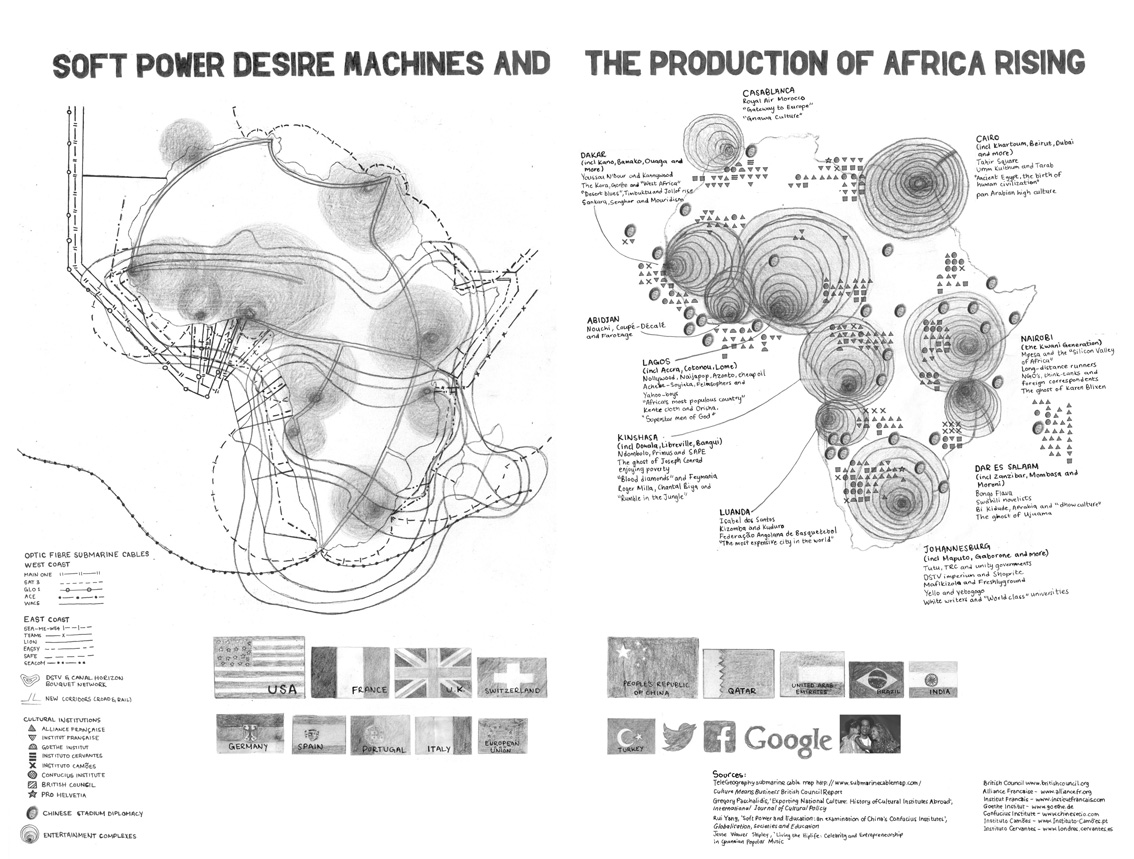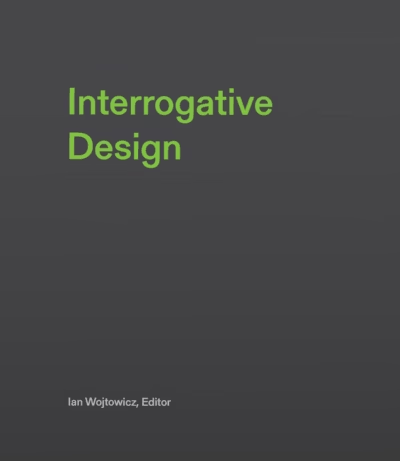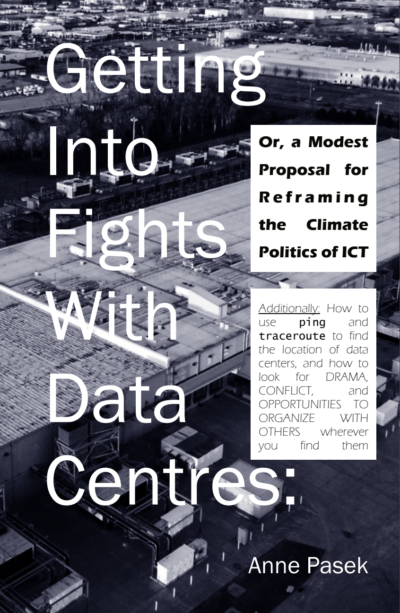“Released in March 2015, “New Cartographies” is the fifth (of six) broadsheets to be produced by The Chronic since 2013, but the first such external collaboration. Illustrated throughout with disarmingly simple, hand-drawn maps, it traces the circuited movement of matter as dissimilar as war and water as it traverses the African continent. Inevitably, the direction of travel is rarely ever one-way. Where the cocaine and heroin landed at Luanda, Nairobi and Dar Es Salaam finds route to Johannesburg and Cape Town, for instance, images of aspirational living and celebrity culture make the journey back north along similar lines. But neither are these flows entirely regular, or even so geographically bounded. A map of the continent’s Soccer Cities—which has Lagos at its centre—is marked by an overlapping, intersecting network of arrows charting the intra- and international flow of players and grass-roots investment. It reveals a complex system of exchange that links Abidijan to Agidir, Accra to Algiers, and Cairo to Chonburi in Thailand.

Such maps, like the issue as a whole, are intent on disrupting the way in which Africa is known and imagined. At its most basic, cartographic representation is always an assertion of knowledge and, thereby, power. As Stacy Hardy puts it in “A Brief History of Mapping,” which serves as a useful introduction to the issue, “[o]ne never maps a territory that one doesn’t contemplate appropriating.” The axiom is as true for the digital age as it once was for Classical antiquity. Google, like the disciples of Ptolemy, are necessarily engaged in an “explicitly political project” (3). In reifying the authority of the map, however, these virtual institutions also help make it a tool of resistance.”




